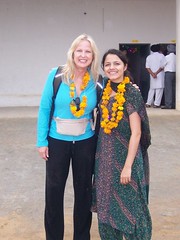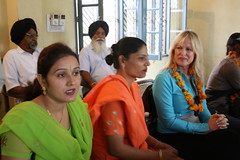Village Mindset

One of the few homes with a door, home of Late Jagat Singh and his family
During our visit to several villages in the Jalandhar District, we observed a notable disparity between the urban centers and the rural communities. The cities in Punjab face challenges such as pollution, primarily due to smog, as well as issues related to city planning and inadequate landscaping. Nevertheless, these urban areas still enjoy access to essential resources, technology, and modern amenities.
 Radisson in Jalundhar city
Radisson in Jalundhar city
In contrast, the villages serve as the heart of Punjab’s agricultural workforce, highlighting the region's reputation as the agricultural capital of India. The scenic farms, adorned with lush green pastures, offer a refreshing reprieve from the urban environment. However, we found that many homes in the villages we visited were in significant disrepair.
For instance, in the central area of Khaira Majja village, we noted a few larger houses amidst several that were considerably deteriorated. The stark contrast between the well-maintained home and its dilapidated neighbors was striking, revealing the depth of poverty present in the area.

The women of the village welcomed us graciously, sharing insights into their living conditions. Many residences consisted of one bedroom accommodating multiple family members, with kitchen facilities integrated into the bedroom.

Some team members offered the women money, but I felt conflicted. I know people of Punjab, in general, to be prideful and hardworking people. Many of the women expressed their emotions, tears of pride and sadness evident on their faces, with some of the women reluctantly taking the money. I understood the pride in not wanting to take it, but I was certain that they would use that cash to buy food or necessities for their children.
One woman openly greeted us and said, "Welcome to the homes of the poor. What can we do for you?"


As I looked around, examining their homes, the narrow alleys leading to them, and the overall well-being of the small community, I identified the most significant issue: the mindset of the people.
The weight of poverty can create a sense of hopelessness, making it challenging for individuals to envision pathways to empowerment and improvement for their community. Yet, the resilience and optimism of the Punjabi people were evident. Our team was inspired by the small but meaningful initiatives underway, such as the development of a small generator, the construction of a model school for younger children, and efforts to establish a proper sewage disposal system. The village people were clearly committed to investing in the future of their children, They shared the belief that "we've lived our life and it isn't going to change much, but maybe we could make it a little better for our children."

Pictured above is a "Narlka," which is where several families get their water source for cooking, bathing, and washing.
It is crucial for the state government to enhance support for these communities through increased funding for education, improved access to basic utilities such as electricity and water, and enhanced healthcare services. Additionally, it would be beneficial for villagers to embrace a more proactive approach to uplift their communities, moving beyond a mindset of helplessness toward tangible progress. I firmly believe that one's internal environment greatly influences their external surroundings. If individuals find themselves in challenging mental and physical living situations, it can hinder community vitality.
Approximately 99% of the homes we observed in this village were deteriorating, appearing extremely tarnished and abandoned, even though entire families were living in them. I understand that constructive change must begin from within and then radiate outward. Unfortunately, the villagers cannot implement these changes on their own; they need resources, practical tools, and assistance from external sources.

Pictured are young girls trying to keep a home clean by sweeping the floors.

Mrs. Singh, who is the Sarpanch of the village (leader of the Panchayat), stands before her husband to greet us.

































































